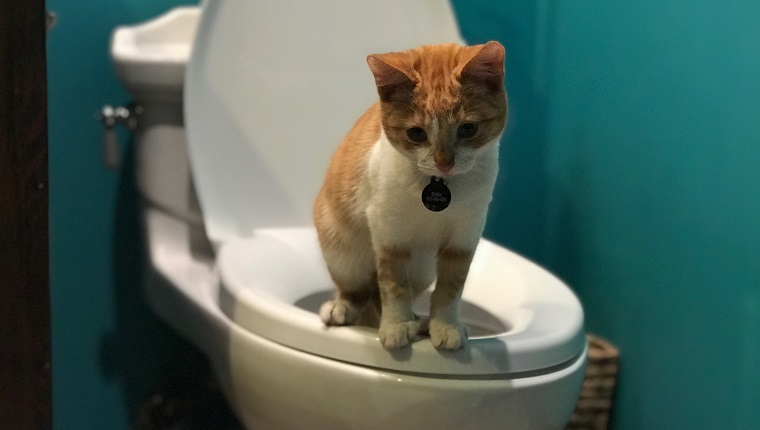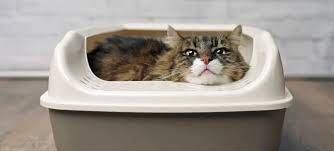How You Must Avoid Flushing Animal Waste Down the Toilet
How You Must Avoid Flushing Animal Waste Down the Toilet
Blog Article
What are your opinions about Why you should never flush dog poop down the toilet?

When it concerns disposing of waste, specifically animal waste, many individuals often consider the hassle-free choice of flushing it down the commode. Nonetheless, this relatively simple solution can have significant repercussions for the atmosphere and public health. In this short article, we'll discover why flushing animal waste down the toilet is a negative idea and provide alternate methods for appropriate disposal.
Introduction
Proper garbage disposal is essential for maintaining environmental sustainability and public health. While it might seem safe to flush animal waste down the commode, it can cause numerous concerns, both for the setting and human health.
Threats of flushing pet waste
Environmental effect
Flushing pet waste presents unsafe germs and microorganisms right into waterways, which can negatively impact water ecological communities. These microorganisms can infect water sources and harm aquatic life, interfering with delicate ecological communities.
Public health concerns
Pet waste includes unsafe bacteria such as E. coli and Salmonella, which can posture severe health and wellness dangers to people. Flushing animal waste down the toilet can infect water supplies, causing the spread of illness and infections.
Alternatives to flushing
As opposed to flushing animal waste down the commode, there are several alternate disposal techniques that are much more eco-friendly and sanitary.
Composting
Composting animal waste is an environment-friendly method to throw away it. By composting, raw material is broken down into nutrient-rich dirt, which can be made use of to fertilize gardens and plants.
Garbage dump disposal
Getting rid of pet waste in a land fill is one more option. While not as eco-friendly as composting, it is a much safer option to flushing, as it prevents the contamination of water sources.
Pet garbage disposal systems
There are specific pet dog garbage disposal systems offered that safely and hygienically dispose of pet waste. These systems often use enzymes to break down waste and eliminate smells.
Actions to appropriate animal waste disposal
To make certain proper disposal of pet waste, follow these actions:
Scooping and landing waste
Regularly scoop and bag animal waste using naturally degradable bags. This stops waste from polluting the environment.
Using designated waste containers
Dispose of bagged animal waste in marked waste bins, such as garden compost containers or land fill bins. Prevent flushing it down the bathroom whatsoever expenses.
Cleaning can and family pet areas on a regular basis
Frequently tidy can and pet dog areas to avoid the build-up of waste and bacteria. Use pet-safe cleaning items to maintain health.
Advantages of correct disposal techniques
Embracing appropriate disposal approaches for pet waste offers several advantages:
Lowered environmental pollution
Correct disposal click here techniques lower the danger of environmental pollution, safeguarding waterways and communities from contamination
Decreased threat of water contamination.
By avoiding flushing pet waste down the toilet, the threat of water contamination is significantly reduced, guarding public health.
Improved sanitation and health
Appropriate disposal techniques advertise better hygiene and hygiene, developing a much safer atmosphere for both human beings and pets.
Conclusion
In conclusion, purging animal waste down the toilet is harmful to the atmosphere and public health. By adopting different disposal methods and adhering to correct waste management practices, we can minimize the adverse influence of animal waste and add to a cleaner, healthier earth.
What To Do With Dog Poo – The Do's And Don'ts Of Disposing Of Faeces
Dog poo bins
Some councils provide dedicated dog waste bins in popular dog-walking areas that can take dog poo that has been bagged but you can legally dispose of dog waste in any public litter bin, as long as it is securely bagged. This also applies to your wheelie bin at home.
Do not flush
Water companies do not recommend flushing dog faeces down the toilet because certain parasites can survive the water processing treatment and are potentially harmful to humans. You should also never consider flushing dog poo that has been bagged down the toilet as the bags will not break down and instead create severe blockages in the sewage system.
In the woods
The Forestry Commission promotes a ‘stick and flick’ method for dealing with waste in the woods. This means finding a stick and using it to flick any poo from off the path so that it is out of the way of other walkers. You could also bury it as long as it is not in an area where there might be livestock.
Livestock
Parasites found in dog poo can be transmitted to livestock if they inadvertently eat infected faeces that has been left on grazing land. This could result in the death of sheep or abortion in cattle so you should always make sure you pick up your dog’s waste in fields where livestock could be present.

Frequently tidy can and pet dog areas to avoid the build-up of waste and bacteria. Use pet-safe cleaning items to maintain health.
Advantages of correct disposal techniques
Embracing appropriate disposal approaches for pet waste offers several advantages:
Lowered environmental pollution
Correct disposal click here techniques lower the danger of environmental pollution, safeguarding waterways and communities from contamination
Decreased threat of water contamination.
By avoiding flushing pet waste down the toilet, the threat of water contamination is significantly reduced, guarding public health.
Improved sanitation and health
Appropriate disposal techniques advertise better hygiene and hygiene, developing a much safer atmosphere for both human beings and pets.
Conclusion
In conclusion, purging animal waste down the toilet is harmful to the atmosphere and public health. By adopting different disposal methods and adhering to correct waste management practices, we can minimize the adverse influence of animal waste and add to a cleaner, healthier earth.
What To Do With Dog Poo – The Do's And Don'ts Of Disposing Of Faeces
Dog poo bins
Some councils provide dedicated dog waste bins in popular dog-walking areas that can take dog poo that has been bagged but you can legally dispose of dog waste in any public litter bin, as long as it is securely bagged. This also applies to your wheelie bin at home.
Do not flush
Water companies do not recommend flushing dog faeces down the toilet because certain parasites can survive the water processing treatment and are potentially harmful to humans. You should also never consider flushing dog poo that has been bagged down the toilet as the bags will not break down and instead create severe blockages in the sewage system.
In the woods
The Forestry Commission promotes a ‘stick and flick’ method for dealing with waste in the woods. This means finding a stick and using it to flick any poo from off the path so that it is out of the way of other walkers. You could also bury it as long as it is not in an area where there might be livestock.
Livestock
Parasites found in dog poo can be transmitted to livestock if they inadvertently eat infected faeces that has been left on grazing land. This could result in the death of sheep or abortion in cattle so you should always make sure you pick up your dog’s waste in fields where livestock could be present.
I stumbled upon that blog entry about Can You Flush Dog and Cat Poo Down the Toilet? when doing a search on the internet. Sharing is caring. You just don't know, you could be helping someone out. Thank-you for your time invested reading it.
Call Report this page